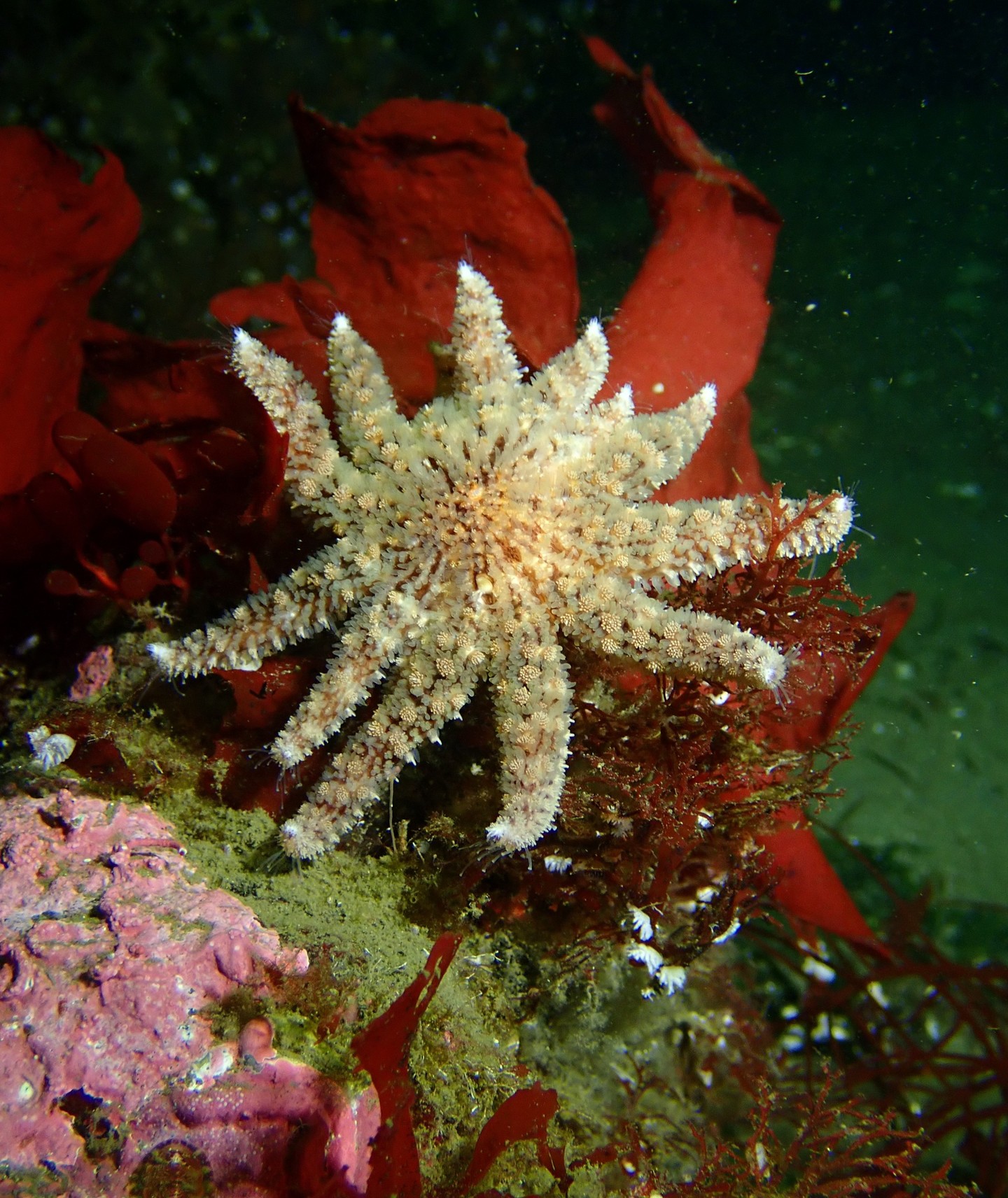- The significance of the sunflower sea star in marine ecosystems
- Overview of sea star wasting disease (SSWD) and its impacts
- The SAFE Sunflower Sea Star program and its conservation strategies
- The role of education and research in species recovery
- Future outlook and the importance of community involvement in conservation
The sunflower sea star (Pycnopodia helianthoides) is a keystone species in marine ecosystems along the West Coast of North America. This vibrant echinoderm, recognized for its striking appearance with multiple arms and a range of colors, plays a critical role in maintaining the balance of marine life. It serves as both predator and prey, controlling populations of various marine organisms like sea urchins and mollusks. The reduction of sunflower sea stars can indirectly cause ecological imbalances, which can lead to algal blooms and declines in kelp forests. Therefore, the health of sunflower sea star populations is vital for the overall well-being of coastal ecosystems.
Unfortunately, this important species has experienced dramatic declines due to sea star wasting disease (SSWD). This disease is characterized by tissue degeneration, lesions, and ultimately, the disintegration of sea stars. In some areas, populations have decreased by up to 100% due to SSWD. The disease is thought to be linked to environmental stressors such as rising sea temperatures, which may contribute to outbreaks. The sudden disappearance of sunflower sea stars from their natural habitats raises alarm for marine biologists and conservationists. Their loss heralds potential repercussions throughout marine ecosystems, as noted by experts who track the cascading effects across various species that rely on them.
In response to this crisis, various organizations have partnered to form the SAFE Sunflower Sea Star program. This initiative focuses on a comprehensive approach to conservation, emphasizing aquaculture, research, and reintroduction strategies. The program aims to cultivate sunflower sea stars in controlled environments, allowing for a better understanding of their biology and ecology. By fostering and nurturing these sea stars in aquaculture systems, scientists can gather essential data on their growth and health, which can be invaluable for successful reintroduction efforts.
Research is also a cornerstone of the SAFE Sunflower Sea Star program. Laboratory studies provide insights into the mechanisms of SSWD and potential methods for resilience against the disease. By actively investigating the environmental and biological factors contributing to sea star health, marine biologists work towards sustainable solutions that can enhance the chances of recovery for this declining species. Their studies can uncover genetic resilience in certain populations, which may be harnessed to bolster biodiversity and vitalize weakened ecosystems.
Education plays an equally important role in the SAFE Sunflower Sea Star program. By engaging local communities, schools, and aquariums, the initiative stretches beyond mere conservation science. Educational programs designed to raise awareness about the plight of sunflower sea stars and the implications for marine ecosystems help foster a deeper understanding of interconnectedness in nature. Through workshops, outreach programs, and hands-on activities, participants learn not only about sunflower sea stars but also about the broader concepts of marine conservation and biodiversity.
Involving the community is crucial for the long-term success of conservation efforts. Activating public interest through citizen science initiatives allows individuals to contribute directly to monitoring sea star populations and the health of coastal ecosystems. People can participate in data collection, log sightings, or report unusual conditions indicating SSWD outbreaks. This grassroots involvement creates a sense of ownership and responsibility among community members. The link between local actions and broader ecological health becomes clearer, motivating citizens to support sustainable practices in their daily lives.
Looking ahead, the outlook for sunflower sea stars remains fragile but hopeful. With the proactive measures implemented by the SAFE Sunflower Sea Star program, there is a chance for recovery. As research continues to evolve, the aim is to develop effective management strategies that combat SSWD and sustain sunflower sea star populations. Collaboration among scientists, conservationists, and the public will be instrumental in ensuring these important marine organisms thrive again along the West Coast.
In summary, the decline of sunflower sea stars signals critical changes in marine ecosystems that require immediate attention. Understanding their significance and the causes behind SSWD allows for better implementation of conservation measures. The SAFE Sunflower Sea Star program stands as a beacon of hope, uniting science and community in the efforts to restore this keystone species. By prioritizing education, reintroduction, and research, there is potential for a future where sunflower sea stars once again flourish in healthy coastal habitats.
*****
Source Description
🌊 Happy
Today we want to highlight the SAFE Sunflower Sea Star program, an initiative that is making waves in conservation! This initiative focuses on aquaculture, research, reintroduction, and education to help recover this species along the West Coast of North America.
⭐ Did you know that the sharp decline in sunflower sea star populations can be largely attributed to sea star wasting disease (SSWD)? In some parts of their native range, this disease has led to declines of up to 100%.
SAFE partners are working to turn the tide for this key species. Visit the link in our bio to learn how!


